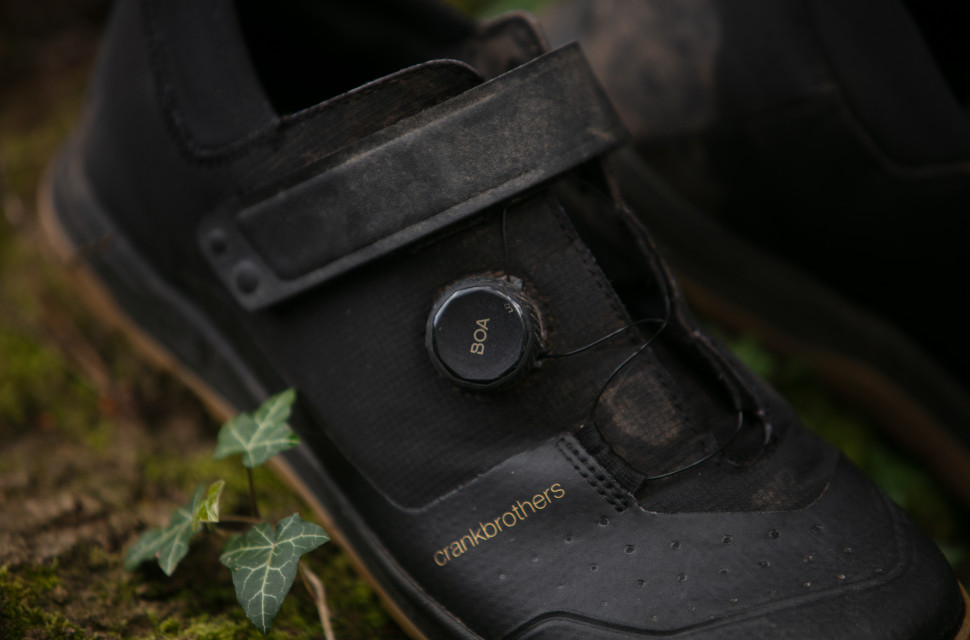Why do most premium off-road riding shoes have Boa dials?

Standards are everything in off-road cycling, and riders have a peculiar relationship with change. Sometimes, trust in the familiar tempers the desire for innovation. Apparel, like garments and shoes, are features of riding kits where change is accepted as a constant. Why? Because riding kits are fashionable, they can be tolerated as seasonal. However, for all the colourways and designs, riding shoes need to retain a strong element of function.
- Laces, Boa or Velcro? Cycling shoe retention systems explained
- Best gravel bike shoes 2024
- Cycling shoes: everything you need to know
What riders need
Colours and weight aside, what riders value most in their mountain or gravel biking shoes, are fit comfort, adjustability and security.
The fastening system on a great riding shoe must allow riders to adjust while riding and remain secure, even in the muddies and worst riding conditions. When your ride is done, and those fingers are tired, you want the easiest way to release tension on your riding shoes and get out of them. Even if they are caked with mud.
Premium mountain and gravel biking shoes have been bold about innovation regarding fastening systems. For many years, the ratchet strap was seemingly the breakthrough that rides needed beyond laces and Velcro, but the Boa dial has largely displaced it. How’d that happen?
Like the shoe ratchet, Boa dials have their original in snowsports. The design challenge of creating a boot fastening mechanism for skiers, climbers, and snowboarders, who wear heavy gloves, impeding their ability to work with small adjuster interfaces, created the ratchet strap solution.
The inspiration for Boa’s fastening system came from snowboarding and ice hockey. Company founding and its original innovator, Gary Hammerslag, imagined there had to be a better way for snowboarders and ice hockey players to fasten and just their boots and skates, than fiddling with laces. Anyone who has tried to tension laces with frozen fingers can relate to Hammerslag’s insight.
Boas are more precise
Mountain bikers and gravel riders rarely use gloves as thick as snowsport gloves. But they nearly always have gloves hands when making those on-bike shoe adjustments.
The growth has been remarkable after Hammerslag’s idea for the Boa adjustment dial, with its steel cable lace, was funded in 2001. Today, there are hundreds of shoe models featuring Boa dials.
An issue with shoe ratchets is the fastening precision being limited by the teeth/notches on the ratchet strap. There will always be a margin between two notches; that gap could be exactly where a rider’s ideal comfort profile might be. That means you’ll end up annoying trying to loosen and fasten the shoe ratchet, but never achieve the exact fit comfort you desire.
Boa dials, with their cable laces, are almost infinitely micro-adjustable. Riders can dial in the amount of cable lace tension they require for peak fit comfort, unlike a shoe ratchet, where the fastening strap’s notch count determines fit comfort.
The other issue with shoe ratchets is that pulling on a ratchet’s adjuster tab or releasing it, isn’t easy to do while you’re riding along, focusing on the terrain. This is especially true for loosening the tension. By comparison, Boa dials with their cable laces are a lot easier to adjust, even with gloved fingers. And that’s important because if you’re making mid-ride shoe tension adjustments on the bike, you will be wearing gloves.
With its round shape, the Boa dial gives you a lot more surface area to grab hold of between your fingers and make adjustments. Shoe ratchet tabs and adjuster edges have comparatively little surface area. In a moment of frustration, you can pull a ratchet adjuster out of alignment, or damage it, something that’s nearly impossible to do, even when working harshly, with the Boa adjuster’s dial.
Boas work in all conditions
If you are a year-round mountain biker or gravel rider, mud matters. Keeping the commitment to your training schedule or group rides through the darkest, wettest winter means you’ll pedal through mud. A lot of mud.
Once mud gets into shoe ratchets, they clog and wear. The clogging issue is annoying, making the ratchet mechanism stubborn to adjust. And wear? That’s even worse, as it compounds. All that mud acts as an abrasive, wearing down the ratchet mechanism and strap teeth. This creates a shoe ratchet that will lack precise adjustment and start slipping, or get stuck, refusing to release.
Boa dials are superior in every way, for riding in muddy conditions. The adjustment mechanism inside the Boa dial is better sealed from environmental contaminants like mud. That means that even a mud-caked Boa-dial shoe will adjust with all the precision and dexterity you need when making comfort adjustments on a muddy ride.
It’s much easier to wipe a Boa-dial’s cable lace clean than to get all the mud out of a shoe ratchet’s adjustment strap teeth.
An alternative to Boa dials?
Many pioneering shoe brands fit Boa dials as the fastening mechanism of choice for premium off-road shoes. The American fastening specialist dominates, but is Boa the peak of mountain and gravel bike shoe fastening systems?
Some alternatives are similar to Boa dials. Italian shoe brand Northwave uses its own dial system, SLW3 and SLW6. Instead of laces or ratchet straps, there’s a dial, which tensions a wire across the riding shoe’s upper. But what’s different, about SLW2?
With Boa dials, you need to pull on the dial when you want to release the shoe tension. NorthWave’s SLW2 has a one-touch cam that’s on the side of the dial, allowing riders to release the system bit-by-bit, with a touch on the cam. That’s handy when you are riding along and have overtightened and need only to release some tension in small increments.
It’s a small difference, but for some riders, the simplest way to get shoes' loose, when they are at peak fatigue at the end of the ride, is the best.
What is the future for Boa?
Having established itself as the dominant premium fastener brand in off-road cycling shoes, Boa seems unchallenged. Its technology is proven, with the company holding hundreds of patents, and nearly all the most recognised mountain bike and gravel riding shoe brands have models with Boa dials in their range.
With Boa dial shoe fasteners, it’s not only about ultralight XC and gravel bike riders. Even downhill mountain bikers, long ardent believers in only using laced-uppers for their flat pedal shoes, are now embracing a range of Boa dial flats, available from several brands.
It’s a case of winter sport innovation, having found a valuable application, in off-road cycling.












